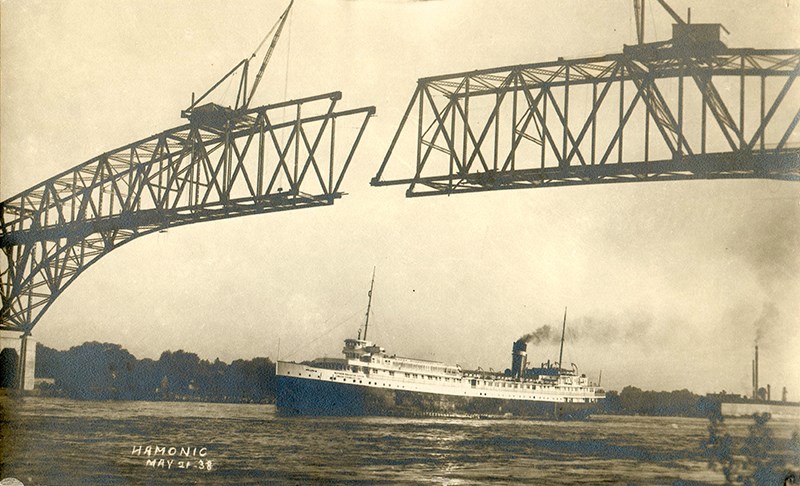 We’ve all heard the expression, a “red letter day.” It dates to the 1300s, when important dates on the calendars assembled in monasteries and convents were marked in red.
We’ve all heard the expression, a “red letter day.” It dates to the 1300s, when important dates on the calendars assembled in monasteries and convents were marked in red.
May 31, 1928 was one of those days in Sarnia. With horns blaring and flags flying, as many as 200 automobiles threaded their way through the streets of the city.
The excitement arose from the passage of bills in the U.S. Congress and Canadian Parliament establishing the St. Clair Transit Company. It meant a long-awaited bridge over the St. Clair River linking Sarnia with Port Huron, Michigan was guaranteed.
The bridge was designed to hasten the journey of Toronto-to-Chicago automobile traffic, at a time when car ownership was exploding.
Construction of the Blue Water Bridge began in 1938. Anyone fortunate enough to be hired for the project had to learn the workers’ unusual terminology. Some of the lingo has disappeared over time, but other expressions are still with us.
A labourer was a “punk.” The foreman was a “pusher.” The “connectors” were the men working at the top of the span, while the “driver” handled the air gun that drove in the rivets.
The “heater” had the job of heating the rivets, which he threw to the “catcher,” who placed the heated rivet into the hole in which it was to be driven.
There’s more.
A “buckaroo” was a specialist, who held the gooseneck-shaped bucking bar that spread the end of the rivet. The company timekeeper was the “eagle” and the caterpillar tractor crane was the “cat-skinner.”
If you found yourself in a dangerous position on the structure with a heightened risk of falling, you were tied down with a “monkey-tail.” Not all workers used them, however, despite the danger. This was evidenced when one U.S. worker lost balance and fell to his death.
Other bridge-builder workplace terms related to the machinery and equipment used on the job. A “stiff-leg” was a travelling crane mounted on top of the steel structure, while locomotive cranes were known as “whirlies.” The “jib” was the outrigger apparatus on the end of a crane boom, while the boom on a derrick was a “gin-pole.”
The work took place on both sides of the border simultaneously. On May 21, 1936, crowds gathered to witness the laying of a piece of steel connecting the two halves of the bridge.
Construction worker Buck Buchanan then took a dizzying stroll across the girder, becoming the first person to officially cross the Blue Water Bridge.
Phil Egan is editor-in-chief of the Sarnia Historical Society. Got an interesting tale? Contact him at [email protected]
